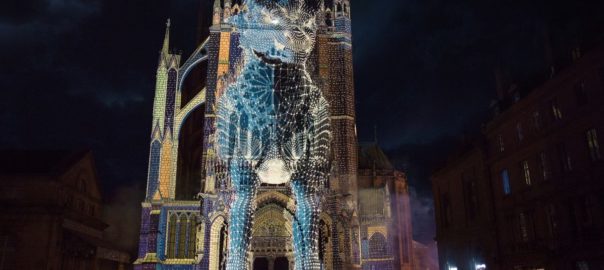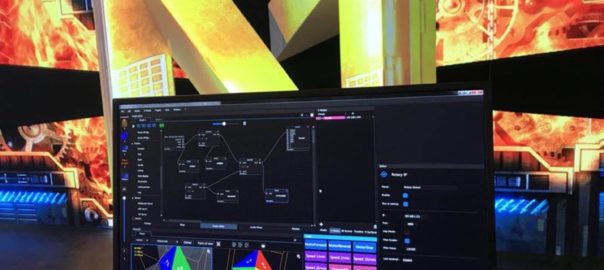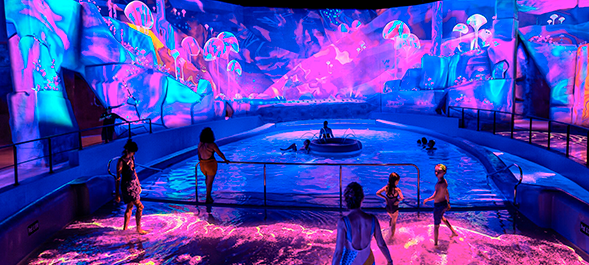Commissioned by Saudi Arabia Ministry of Culture
Production: Arabian Opera, Hwadi
Video-projection: VLS
Video content: Roberto Vitalini – Bashiba
The Modulo Kinetic media server drives Saudi Arabia’s first opera
In the spring of 2024, the city of Riyadh welcomed Zarqa Al Yamama, the first grand opera in Arabic and first operatic work produced by the Kingdom of Saudi Arabia. At the heart of this ground-breaking production, a video-projection system with mobile screens was deployed by service provider VLS Middle East. To power the projection in motion, VLS worked with Modulo Pi’s Modulo Kinetic media server.
Saudi Arabia created a sensation with Zarqa Al Yamama, the very first grand opera in Arabic, inspired by the heroine of the same name and a legendary figure of pre-Islamic Arabia.
From April 25 to May 4, renowned Saudi and international artists came together in a two-act partition to tell the story of Zarqa Al Yamama on the stage of the King Fahad Cultural Center in Riyadh.
The staging featured an advanced video-projection system, installed by VLS Middle East. Three panoramic screens were at the core of the system: two landscape screens, each measuring 10m x 4m, and one portrait screen, measuring 3.2m x 7.8m.
The screens were installed at a height of 25m, at the level of the fly lofts above the stage, and at different depths. The screens were moved down onto the stage and back up into the fly lofts over the course of the two-hour show.
Designed by Roberto Vitalini, the screens formed moving horizons, creating a poetic backdrop for the Saudi piece.
Each screen was lit by 2 x Epson EB-PU2220B video projectors. Used in rear projection, the six projectors were installed on automated poles that moved simultaneously with the screens.
To power this video projection in motion, VLS Middle East relied on Modulo Pi’s Modulo Kinetic media server solution. The media server delivered the media with a resolution of 3840 x 1200 on each of the horizontal screens, and 1200 x 3840 for the vertical screen.
In addition, Modulo Kinetic’s UI Designer function was used to create a control interface to make rehearsals easier. Using the interface, Roberto Vitalini, the video set designer, could launch the videos made for the opera in complete autonomy.












